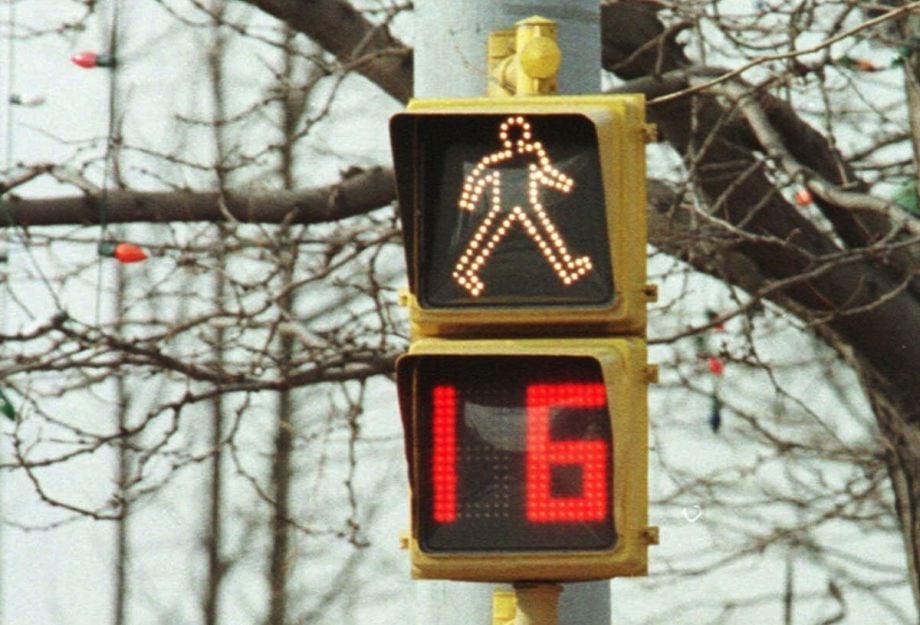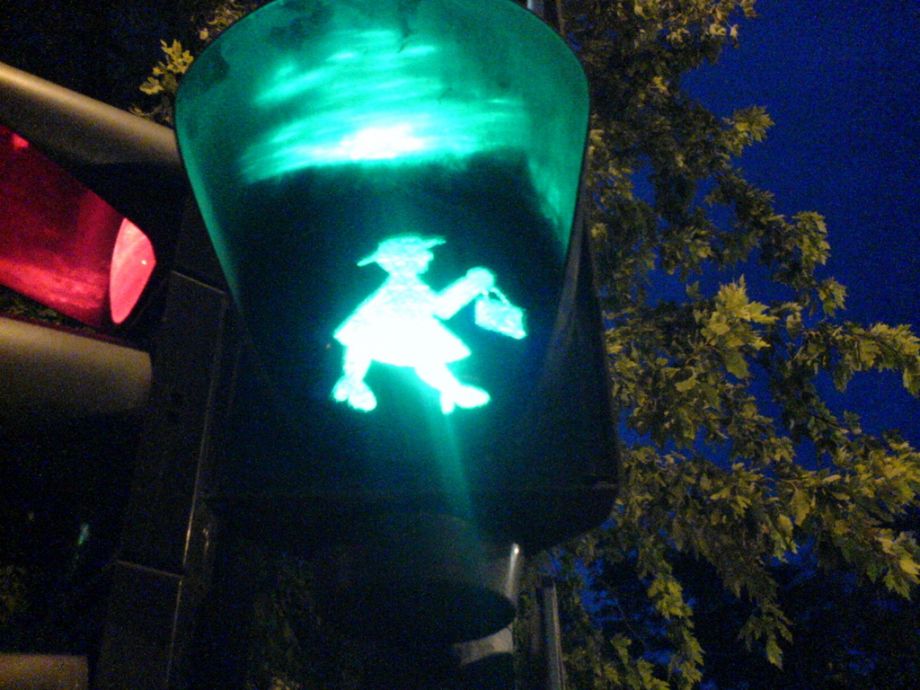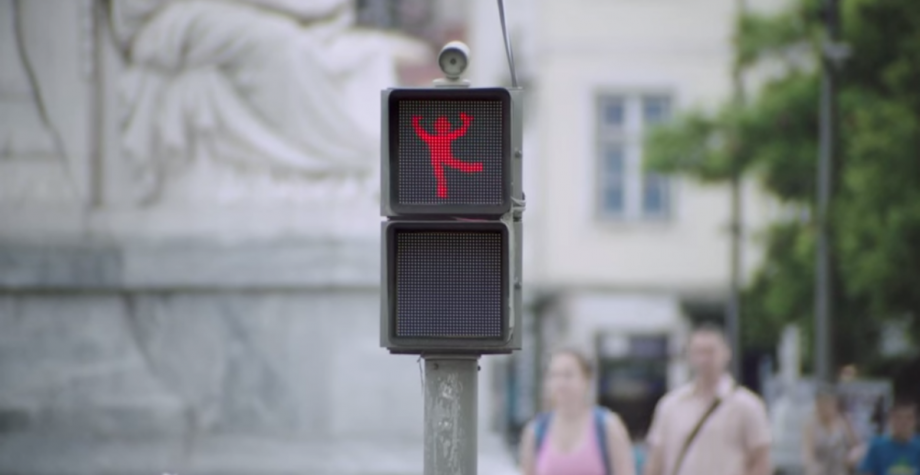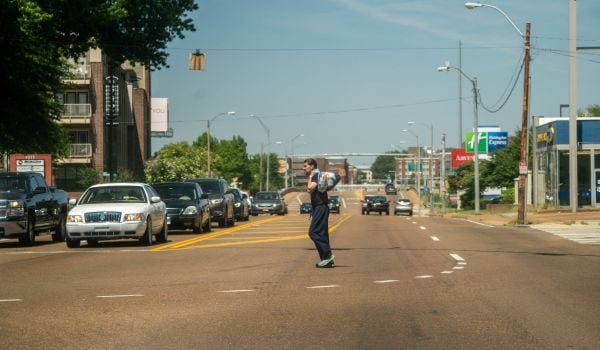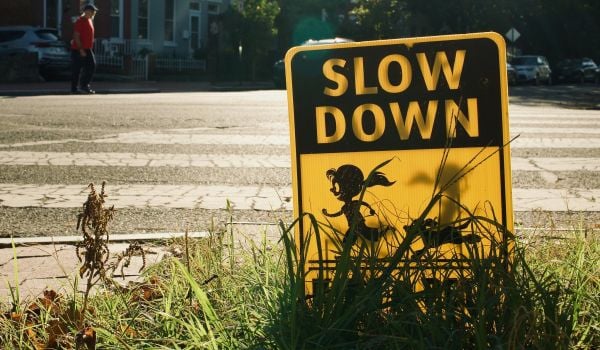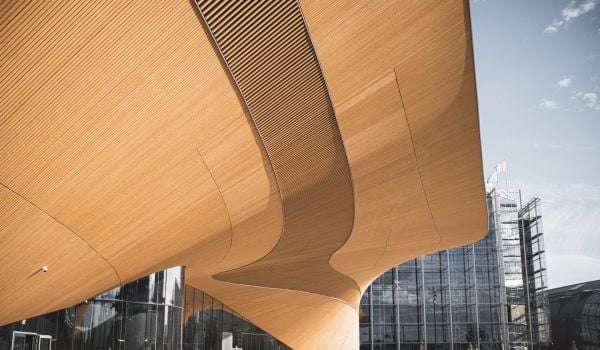A few years ago, politicians in Berlin made headlines for their attempts to bring gender equality to their city’s crosswalk signals. They wanted to create an “Ampelfrau,” or “traffic light woman,” a female counterpart to the iconic “Ampelmann” invented in East Germany in the 1960s.
It became clear right off the bat that Ampelfrau would be laden with biases and complications that Ampelmann escapes. In her motion requesting Ampelfrau, Social Democrat District Leader Martina Matischok-Yesilcimen specified that the figure should represent a self-assured, modern-day woman, yet without any “sexist stereotypes” — meaning no ponytails or skirts, and definitely no high heels or mini skirts — according to the Local.
This design turned out to be too difficult to achieve. Though Ampelfrau exists in other German cities, she was rejected in Berlin partly because her proposed pigtails and dress were seen as outdated and clichéd.
In recent years, cities across the globe have been experimenting with crosswalk signal design to advance cultural goals. Before hosting the Eurovision Song Contest last year, Vienna introduced gay- and lesbian-themed crosswalk signals to demonstrate open-mindedness. Wellington, New Zealand, has commemorated suffragette Kate Sheppard and transgender icon Carmen Rupe on crossing lights, in part to promote the city as “truly progressive” on the 150th anniversary of it becoming the capital, the mayor’s office says.
And some cities, like Berlin, have honed in on crosswalk signals as a place to raise awareness for gender inequality, such as Amersfoort, the Netherlands, and recently Valencia, Spain. These designs invariably include some of the elements — skirts and ponytails — that Berlin rejected.
Amersfoort’s female crossing symbol is named “Sofie.” She strides forward when green and waits patiently with her arms behind her back when red. She wears a dress, heels and a ponytail. When one of these lights was presented to the Canadian Museum for Human Rights in 2013, a press release stated, “The light uses a realistic female body image, sporting a ponytail, instead of the traditional male figure, as an innovative way to draw attention to the predominant use of male figures to represent all people.”
Sofie, Ampelfrau and other female-designed crosswalk symbols do challenge a male-centric worldview just by existing. They occupy a crucial space in our roadways, where we are required to look at them in their skirts and ponytails, reminding us that there are people besides men and perspectives besides men’s perspectives. However, they simultaneously highlight the difficulty of dismantling that worldview.
Unlike in Berlin, in most cities the traditional crosswalk signal is not an explicitly male figure, it’s just a stick figure that is generally perceived as male. (Consider the fact that they’re often called “green men” or “walking men,” or that they are the same as men’s room symbols, or that so many cities decided they need female counterparts.)“It’s tricky for anyone involved in making [design] decisions about this kind of thing,” says Lisa Wade, a sociology professor at Occidental College and founder of the sociology site Sociological Images. “They’re making decisions in a context that’s already biased.”
“If you gender them female by adding, say a ponytail or a skirt, then people will see it as specifically female and not representing people or humans,” she continues. “‘There are people, and there are women.’”
Some citizens who have interacted with these crossing lights agree. Reactions in Valencia included deeming the lights “sexist” and on Twitter, one woman wrote, “Dressing in trousers was a triumph for women. But now we are putting a skirt on the traffic lights in Valencia to feminize them.”
But Wade also notes that cities’ crosswalk signals in particular are working under an additional layer of bias: that public space is male, and private space is female.
“It is a pervasive idea, and it’s about more than just gender neutrality, but literally who is most naturally suited to be in public,” she says.
Maybe you read in high school about “separate spheres,” the Industrial Revolution-era ideology founded on this principle. Maybe now and again you still hear dumb jokes about a woman’s place being in the kitchen. And if you’re a woman who has walked alone in public, you have probably experienced this bias firsthand. A 2014 Hollaback!/Cornell University study found that 93.4 percent of women surveyed globally had experienced verbal or nonverbal street harassment in the last year, and more than half had been groped, and as a result many women limit or alter their use of public space; 16 percent changed their routes and 30 percent changed public transportation options.
For Wade, creating female crosswalk icons — even if it requires us to use imperfect, clichéd markers of femininity — is inherently valuable because it challenges the male-centeredness of our public space.
“It would force men to see themselves in that ‘walking woman,’” she says. “That is actually a really profound thing, because it requires men to see female people as human beings, just like they are.”
Maya Barkai, the artist behind the public art project “Walking Men Worldwide,” has been collecting images of crosswalk light symbols from cities across the world since 2004. She estimates that of about 180 different symbols in her collection, roughly 10 are gendered female.
Barkai says that while she is frustrated that the feminized symbols always wind up in a skirt, like Wade she believes they can serve an important role in public space.
And like Wade, she acknowledges the difficult context surrounding these designs.
“The walking icon is a very ‘dumbed down’ version of what the figure of a male or female would be. It’s obviously limited in what it’s showing,” she says. “The question is: Why do we see a male when we look at a [symbol] with a round-shaped head and legs and arms?”
This question plays into the title of her public art project. Barkai says that the title “Walking Men Worldwide” sprang naturally from a linguistic gender bias in her native Hebrew: A group is referred to as masculine in Hebrew as long as men — even just one man — are present at all.
“It’s something that I’ve debated about and questioned myself,” Barkai says. “It was kind of an intuitive thing. That’s how I was brought up … . It becomes an automated thing and that shapes a culture, shapes our society.”
So are Amersfoort, Valencia and others wasting (albeit minimal) resources on feminized crosswalk signals? Are these cities attempting to treat a symptom of sexism and hoping it will cure the disease?
Tara Goddard, an urban studies researcher and Ph.D. candidate who has studied gender and biases on the road, argues that not only are public streets “a perfectly appropriate space” to explore gender bias, crosswalk signals in particular are in a unique position for us to try to influence culture.
The ubiquity and homogeneity of a city’s crosswalk signals allows us to capitalize on “novelty factor,” Goddard says. We could change the symbol to catch people’s attention, and then surround it with other signage or information to create a lasting impression.
“In the short term, people are going to be like, ‘whoa, what’s that? That’s different.’ And then there needs to be: ‘Here’s why it’s different,’” she says. “The question is, what are you pairing it with to make it effective long term?”
For example, she says, female-designed signals could be placed on streets that also have banners about rates of sexual assault. Corporations already use this technique for “guerrilla marketing,” such as this Nike campaign that put “boots” on cars, paired with a fake police notice that encouraged people to go for a run rather than drive. There was even a “dancing” crosswalk light in Lisbon, Portugal, that disincentivized jaywalking, but was also part of a wider campaign for the Smart Car company.Not everyone thinks female-gendered crosswalks are necessarily valuable.
Amelie Künzler is the co-founder of Urban Invention, which created a crosswalk game called Street Pong that incentivizes waiting for the light. She tells me that she has been contacted several times on the topic of gendered crossing lights by female politicians and others.
However, she says that she doesn’t read existing traffic lights as male. “I personally always imagine a strong woman in a suit,” she says. And like many people I spoke with for this piece — and myself — she notes that she would not feel represented by a figure in a skirt or a dress, “so in [her] opinion the problem is not the sign on the traffic light but what we make of it.”
“I think gendered traffic lights are not the answer. But this topic got me thinking on how we can maybe find a design that doesn’t even show a person,” she adds.
Feminist graphic designer and public artist Sheila Levrant de Bretteville says she accepts the traditional stick figure as gender neutral, and prefers that signage so as not to reinforce the male-female gender binary.
“I do think it is appropriate to interrogate every aspect of our shared public environment for the ways it does or does not support women,” she writes in an email. “As a feminist I pay attention to all the ways women are not represented nor treated as well as any other gender. That noted, when I as a feminist tell you I prefer public signage such as ‘walk’ and ‘do not walk’ signs to be gender neutral — or rather not conform to strict M F guidelines … it is because I think we ought to take care not to continue to reinforce gender binaries.”
As several people I talked to note, there are many people of all genders using crosswalks every day who do not look like the typical “walking man.” For example: people in wheelchairs, people using walkers, many trans and gender nonconforming people, children, and on and on.
When cities choose to represent women or other figures besides the traditional “walking man,” officials often herald the safety benefits of these “creative” designs alongside their potential social impact. The Wellington mayor’s office says the Kate Sheppard sign was kept past its 12-month trial in part because “creative interventions [in crosswalks] often improve pedestrian safety.” The gay-themed signs in Vienna were also aimed specifically at safety improvement, according to reports from the time, and at the “dancing traffic light,” Smart reported that 81 percent more pedestrians waited for the light than before.
The potential safety benefits of “creative” pedestrian lights could be important for our shared streets, and it makes sense for cities to explore. However, they shouldn’t be celebrated as going hand-in-hand with social impact.
If female-gendered crossing lights are necessarily “creative” or “novel” for pedestrian safety, then they don’t challenge the male-centeredness of city streets. They remain outside of the norm, an attention-grabbing deviation from the universal “walking man.” For safety improvements, we might as well use cultural icons, cartoons and historical figures instead, as many cities have decided to do.
In a way, that puts us back where we started.
“If it was easy to get rid of male dominance, we would have done it by now,” Wade jokes. “Patriarchy has a way of coopting everything we do … that’s part of why it’s so incredibly difficult to disrupt it in any major way.”
So if there is a perfect feminist crossing signal design, we may have many more streets to cross before we find it.
The Works is made possible with the support of the Surdna Foundation.
Jackie Strawbridge is a freelance writer interested in cities, public space and public art. As a local reporter, her work has appeared in several print and digital outlets in western Queens, NYC. She reports on public art pieces and policy at Site Specific.


